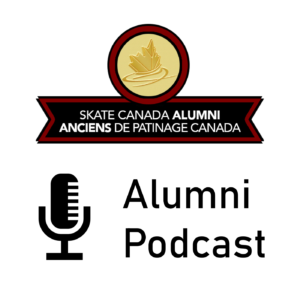

Benoît Lavoie – Part 1
Of all the individuals who have contributed to skating in Canada and around the world, few have the incredible experience of Benoît Lavoie. His skating career began as a competitor but it was his commitment as a volunteer which gave him the greatest satisfaction. National, international and Olympic judge, past President of Skate Canada and now a Council member of the International Skating Union, Benoît shares his adventures with Alumni Chair Debbi Wilkes in this first edition of a two-part conversation.
![]()
A Legend, a Legacy
 by Debbi Wilkes
by Debbi Wilkes
Today’s goals for competitors are the same as ours were back in the 60’s … to become the best skater/performer you could be. While the landscape may have changed dramatically since then with technology advances and increased support, many of life’s best lessons remain the same thanks to the legacies built by so many skating pioneers.
Let me set the stage.
As many will remember, decades ago there were no Grand Prix events, no summer competitions or individual events, no such thing as an invitational, no chance to test programming until you were actually competing in Sectionals or Canadians. You may have had the luxury of a visit from an official to get their impressions but back then it was pretty much done on the QT, judges and skaters separated by protocol as if they were on opposing teams. Today, all members of the skating family contribute to a skater’s success. What a bonus!
But what about down time, periods of rest to recover and re-energize? Today there’s really no such thing as “time off”.
With a short recess after show performances and special appearances, competitors today use the off season to begin the real “foundational” work for the next year… the decisions for the creative process, the ideas, the music selection, the choreography, the costume design and, most importantly, the practice needed to improve, prepare and train for the new season.
In my day, my family insisted that I had at least two months off… June and July… “to be a normal kid”, my Dad would say. We had a cottage up north, a sanctuary, somewhere to escape the pressures of competition and the expectations that went along with them… but I couldn’t wait to get back on the ice!
Much of my love for skating was motivated by my coaches Bruce and Marg Hyland at the Metropolitan Summer Skating School at the old Weston Arena in Toronto. With Bruce’s passing just a few weeks ago, it gave me the opportunity to look back at all those years of summer skating and to reflect on many of those life-shaping experiences and the incredible impact they had on my life and career.

Summer was the only time of year when I could skate all day and practice with some of the best, like Otto and Maria Jelinek, Louis Stong and Don Jackson. As a young skater looking on, that taught me some of the best lessons.
As heads of the school, Marg and Bruce brought many original and revolutionary ideas to our training, things that today are automatic additions. Activities like “off ice” training, strength-building exercise, creative movement, musical appreciation and modern dance became part of our daily regimen. Marg even took it a step further by teaching us classes about diet, manners and etiquette, grooming, clothing and make-up. I loved every second!!
And then there was technology … or lack of it by today’s standards.
In the 60’s, let’s remember nobody had heard of laptops, cell phones or the Internet. We had Hi-Fi radios and record players… yes, vinyl… stereo if you were leading edge, black and white TVs, and the only kind of video tape was a 2”-wide type used by TV stations. Digital??? Never heard of that either!!
The selection and recording of music was always top of the summer’s agenda and one the hi-lites of the summer for me.

To choose our music, my Mom would listen to the radio all day long, during laundry, house cleaning, cooking, driving, you name it, all in search of good selections. When she heard something she thought we might like… remember, 99% of programming was to classical music… she would either phone or write the radio station directly… imagine, snail mail… give them the date and time she heard the piece, and they would check their programming logs to give her info on the title, composer, and recording. Under Bruce’s direction, the process would often take weeks!
The next piece in solving the musical puzzle was to head to a special record store in downtown Toronto, Sam the Record Man, to try to find or order the recording. (My parents must have spent thousands on records!)

Once Bruce had approved the music, we’d all get together to choose the specific parts of the selection and figure out if and how they’d go together. That was a tutorial all on its own! Bruce was adamant we learn about the music’s history too, its composer and its story. He’d say we couldn’t interpret the music unless we understood its “soul”. We’d listen for hours to hear the tones and nuance… and to FEEL the music.
Then it was off to this magical place… RCA recording studio. Bruce insisted we join him to witness the expertise of the engineers… where a sound wizard would push buttons and pull levers to create two copies of our very own vinyl record. (In those days we carried our records in a specially-built wooden carrying case, all the rage. Remember those?)
As you can imagine, Bruce was very picky about how music fit together, one note more or less made a big difference to the sound. And he was determined that if we could understand what the music meant, our choreography would be developed according to what the music said.
He taught us his music rules too, things like you should never start or end a movement in the middle of a phrase of music. To Bruce, skating wasn’t just about completing tricks successfully, it was just as important to tell your story. Every stroke of the blade had to match a specific musical note, otherwise your “story” wouldn’t be clear to the audience and could never have the greatest impact.
With music in hand, the choreography would begin, and Bruce was a magician in design. We’d go through days of experimentation with the placement of elements and how they were connected. Was there enough time to set up a lift properly? Was the order correct to maximize their success? Were we covering the entire ice in a way that showed off our best skills? Were our program hi-lites matching the musical hi-lites? Was the program construction so intense we’d be exhausted by the halfway point … remember senior pairs skated 5 minutes … or had we built in some breathing space? Just like a beautiful piece of music with highs and lows, he explained, a beautiful program had to have them too.

Looking back, I remember feeling our programs were never quite “finished”. As our ability to skate them well improved, Bruce always made little tweaks to make them better, more flowing and more difficult, even up to competition day. Bruce never wanted them to be automatic or robotic despite the hours and hours dedicated to their training. But any change was always driven by what the music said.
I can still hear him call out, “Listen to the music!”
Thank you Bruce … for all the lessons.
![]()
The Partnership
by Nancy Sorensen
In the 1980’s, competitive figure skaters in the Maritimes had several disadvantages. There weren’t very many of them! The few who reached national levels, were usually the best skaters on home ice with little or no competition, nobody to “skate up to”. Outside of Maritime-generated competitions, there was limited exposure of Atlantic skaters to competitors and conditions in unfamiliar venues. This resulted in talented, young athletes lacking high level competitive experience and in performing frequently before audiences. The New Brunswick Skater Development, of which I was a member, sought a solution to this dilemma.
In Fredericton in 1981, a minor, professional hockey team was established called the Fredericton Express. Parent teams were the Quebec Nordiques and the Vancouver Canucks, both NHL affiliates. Home games for the Fredericton team were held at the Aiken Centre on the UNB campus. Attendance was, generally, favourable. Could hockey benefit figure skating?
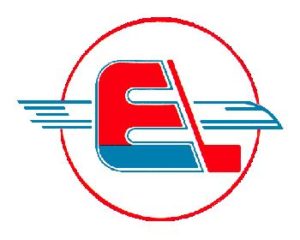
I met with the General Manager of the Express and we discussed our needs. For figure skating it was exposure, audience interaction, and performance experience. For the hockey franchise? Early evening games meant many fans had little time, if any, for supper before heading to the Aiken Centre. The manager’s problem was the mass exodus of fans to the concession stands between first and second periods, long line ups for food and drink, then the constant dribble of spectators returning to their seats. This sorely disrupted avid hockey goers who didn’t want to miss a minute. There seemed to be a constant upheaval of people standing, shuffling, getting resettled. This had become a major irritant to hard core hockey buffs resulting in multi complaints. Could figure skating help hockey?
The team manager and I hatched a plan that we hoped would benefit both of us. Let’s put a figure skater on the ice between Period 1 and Period 2 as entertainment for non hungry spectators and as an incentive to the foodies to return to their seats promptly. The second period could begin with an attentive, game ready crowd. What more challenging exposure for figure skaters than to perform before a hockey crowd!
There were kinks to iron out. Everything about hockey is timed, including the intervals between periods of play. Teams are fined if those breaks run overtime. Nets have to be removed, the Zamboni makes its rounds, ice dries, goals replaced, teams return to the ice. A twenty minute window. So, we practised. The manager and I, stop watches in hand, timed the various activities between periods one and two. Now, we had to squeeze in a skater, performing up to a three and a half minute program within that time allowance. Rehearsals continued during Express practices…..nets, Zamboni, 30 seconds for skater to be announced and get on/off the ice, the program, applause, nets restored. Close! It could be done as long as here were no hitches or unforeseen problems. My Skater Development colleagues and I composed a roster of skaters who might best benefit from our plan yet enhance the hockey game.
There were other things to consider, such as an available empty dressing room somewhere in the arena. No warm up! Preparation would be a loosening up before stepping onto the ice. To charm the audience, spread eagles, long spirals, fast spins and, please, do not fall. Gear the program for a non knowledgeable audience. Show business all the way. Bright colours, and sequins. Take your bow, exit the ice as quickly as possible. The idea was to promote figure skating to possibly uninterested onlookers while gaining performance experience. All skaters involved were not Frederictonians which necessitated travel, accommodation and other expenses.
For the team directors, they were looking for an effective way to lure the concession cats to their seats in good time to watch the skating but more so, to be ready for the continuation of the games and be less a nuisance to serious hockey fans.
Our first presentation to a good Aiken Centre crowd was a very young skater, super cute, with an impressive spiral and a wicked wind up spin. Her impending performance was announced at the start of the game in hopes that curiosity might entice some spectators to stay put and watch. Our skater debuted to sparse numbers. Our next effort featured a promising, young dance team, well received by those who cared to remain. Was this going to work?

These exhibitions were sprinkled throughout home game schedules. As the seasons progressed, we noticed more and more people stayed behind or hurried their concession visits in order to watch the announced entertainment. Our skaters grew more comfortable at presenting themselves and their talents before hockey aficionados. They skated to increased spectator numbers since their programs added a special dimension to the hockey evening. Our competitors did well, one being Andre Bourgeois, who had had a most successful run, winning the free skating in Junior Men and reaching the podium at Canadians.
The stopwatch practices paid off. We never had a time infraction and the process became a smooth routine. Our alliance benefited both sports as hoped. Alas, all good things come to an end. In 1988, The Fredericton Express team moved to Nova Scotia to become the Halifax Citadels. All was not lost however. Our skaters met the challenge of performing before audiences while the hockey crowd gained a greater respect for their own game and an appreciation for figure skating.
![]()
Figure Skating, Fun and Friendship
by Joyce Hisey and Audrey Williams
 A special friend of Figure Skating, Anne Doherty, died on May 31st. She was a member of the Skate Canada Alumnae but more than that a special friend to Audrey Williams and Joyce Hisey.
A special friend of Figure Skating, Anne Doherty, died on May 31st. She was a member of the Skate Canada Alumnae but more than that a special friend to Audrey Williams and Joyce Hisey.
With Audrey, the friendship began in teenage days when they crashed together running in a hall and got a shock! For Joyce, the fun and games began when Anne, then a C.F.S.A. Board member asked her to produce a new set of dance records.
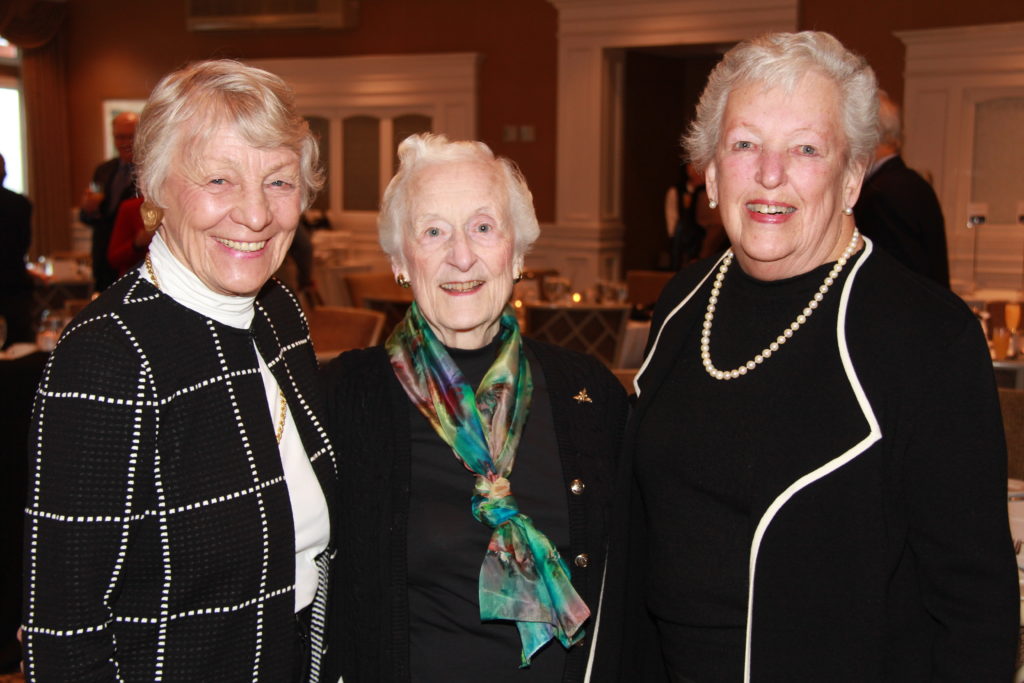
Anne’s main love was Figure Skating, especially dance. When her skating days ended, she took to judging covering all three disciplines at the domestic level and eventually became an ISU Championship judge.
At home she became a leader in the Manitoba Section administration and played an important part in its development. This outstanding contribution covered many years.
Judging, monitoring skaters and mentoring young judges was not all Anne accomplished. She volunteered with the Royal Winnipeg Ballet, ran a flower shop and lately got into environmental ‘water’ matters at her cottage on Lake Winnipeg.
On the home front, partner Ken and son John were #1 on Anne’s list of priorities. Family time in the city or at the cottage always came first.
Finally, retirement! Roomies, Audrey, Anne and Joyce, burned the midnight oil many a night sipping white wine (rye for Joyce) and reminiscing. Time at events meant renewing friendships, gossiping and enjoying their favorite sport. Never without an opinion on a program, music, costume or judging, the ladies were happiest remembering ‘the good old days’!
The skating world has lost a most worthy participant, skater, official and friend in Anne. She will be greatly missed.
To read Anne’s obituary please go to this LINK
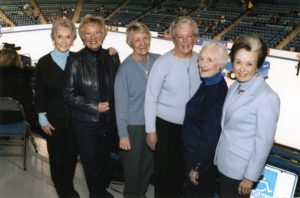
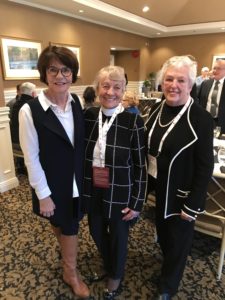
![]()
My Very Own Centennial Celebration – Heather Fraser
by Heather Fraser
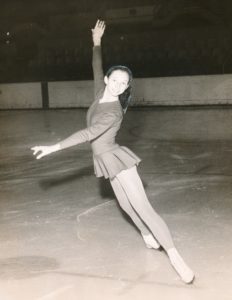
At the 1967 Canadian Championships, it was the Centennial year for Canada. Being such a special year to win, there were many wonderful celebrations included in each Province and, at many of those, athletes from all sports were invited to participate.
My journey that week was one that ended exactly how I had dreamed…
I came 6th in figures and just wanted to give it my best in the freeskate. I remember that performance as movement filled with joy and knowing I had done all that I could (but so had everyone else!).
I was sitting in the dressing room when the awards were just starting, and a coach came in and said I had best get my skates on fast. I didn’t know why, but I did as I was told and then sat in the penalty box.
The Ladies were announced and when I heard my name called, I went out and stood on the 3rd place stair – feeling pretty good – 6th to 3rd. Then when the person handing out the medals gave me a hand up to the top – shock set in.
When the medals were given out, I got a silver one… so right away I thought I had come second and was put in the wrong place. The others were given medals too and then I was given the trophy… so I did win!

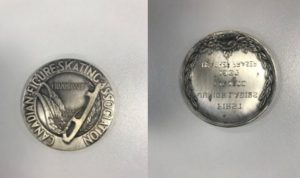
I learned years later that a silver medal was given by the CFSA (now Skate Canada) for all podium finishes.
Several months later I received a GOLD Centennial medal with the Centennial Maple Leaf on it and with a small skating figure at the bottom. These were given to everyone in sport who won a National title. The skater changed to tennis player or swimmer etc. depending on the sport.

With Toronto hosting that Canadian Championships that year, Ontario invited all sport national champions from competitions held in Ontario to a special event and presented them with medals that were also lovely. I was unable to attend but they graciously mailed me my medal.

It was such a great accomplishment and memory… and now these medals are resting in a very special place!
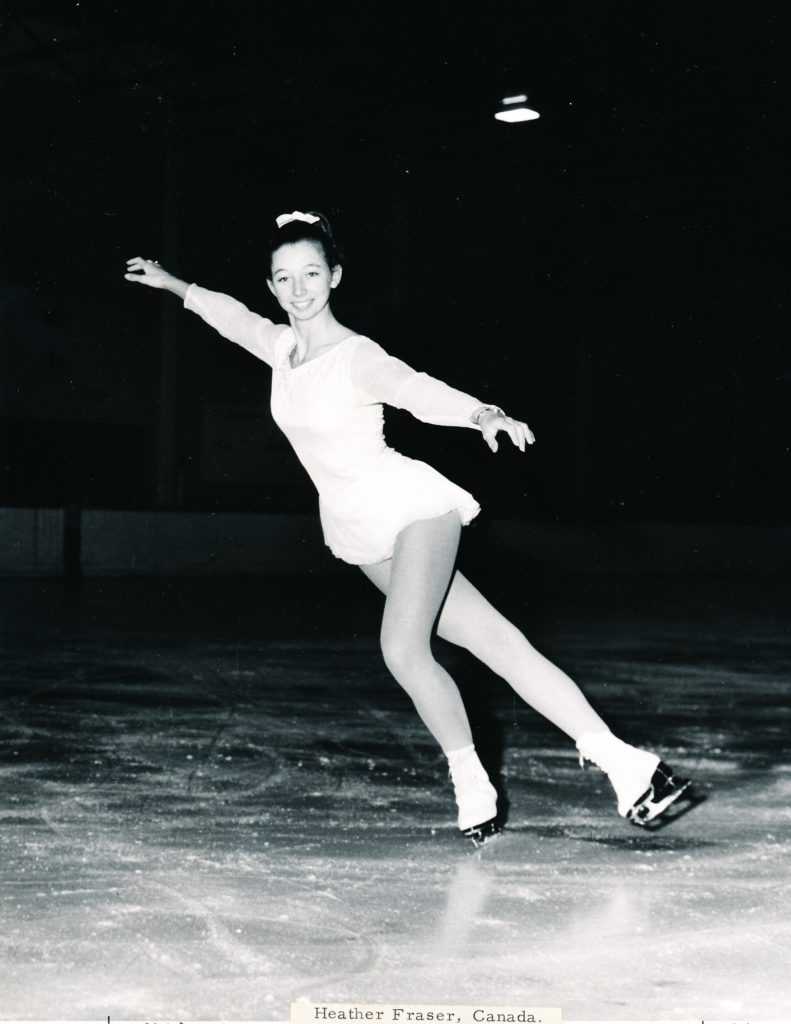
![]()
Get your package today – limited seats left in Option 1



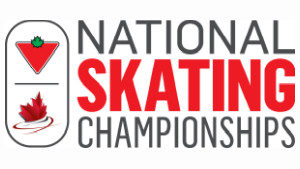
STAY TUNED – Alumni Event Packages for the 2020 National Skating Championships will be available in the late Summer beginning of Fall.
![]()
We’d love to hear from you! Today staying in touch is easier than ever!
E-mail us your stories, photos, thoughts, suggestions and questions. We can’t guarantee we’ll print each one however we will certainly read every word and in the case of questions, find answers to them all.
Contact Celina Stipanic, Alumni and Fund Development Manager at [email protected]
